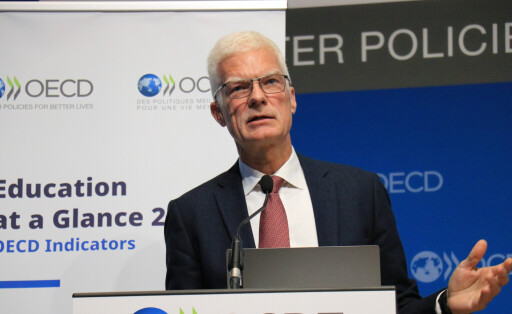Education in China is one of the most important issues in the country in order to achieve the Communist Party's ambitious growth targets. The Table.media editorial team provides all the latest news on education in China. Does China have compulsory education? China has had compulsory nine-year schooling since 1986. It is part of the "Decision on the Reform of the Education System", which was passed by the Central Committee of the Communist Party of China in 1985. This still forms the basis for the existing school system in the People's Republic today. For a long time, the education system in China lay dormant. It was not until the death of Mao Zedong in 1976 and the end of the Cultural Revolution that the Communist Party was able to carry out a school reform. Over the years, school hours were gradually increased and large sums of money were invested until the aforementioned decision was made by the Communist Party in 1985. How does the school system in China work? The education system in China is organized decentrally. The individual provinces and regions have a strong say, while the powers of the Ministry of Education in Beijing have been regularly reduced since the '90s. As part of China's opening up, the education system has also been standardized according to the International Standard Classification of Education. Attending kindergarten is not compulsory in China. Children can start attending between the ages of three and five and stay until the age of six or seven. Chinese children then attend elementary school for six years. In rural areas, some children only attend for five years. How does schooling work in China? After elementary school, children in China attend secondary school. Secondary education is divided into three years of lower secondary school and three years of upper secondary school. There are general secondary schools and vocational and technical secondary schools, with the general secondary school preparing students for university. At the end of upper secondary school, students take the Gao Kao. The examination is comparable to the Abitur in Germany. It is a final examination after twelve years of school. It entitles students to attend university. The exam is standardized throughout China. How are children educated in China? Academic achievement is a central goal of education in China. Because education in China is based on the teachings of Confucianism, just like society in China, criticism is an important component. Praising children is less common than in Western countries because praise is considered immodest. It is part of the culture in China and is not perceived as harshly as in this country. The school system in China is based on a reform from 1985 and is considered outdated. Drill and high pressure to perform are the foundation of school education. Good performance is generally seen as the only way to achieve social advancement. At the same time, competition is fierce in the world's most populous country, so parents in particular often react with strict performance monitoring. Education in China China has a problem with its education. The level of education in the People's Republic is too low to implement the Communist Party's ambitious plans. The government plans to turn the country into a high-tech nation and a global driver of innovation. However, there is a lack of qualified personnel. Development economist Scott Rozelle has researched this topic in China. He comes to the conclusion that of all middle-income countries, China is the country with the lowest level of education. Countries comparable in terms of income, such as South Africa, Thailand and Mexico, fare better in this respect. In the People's Republic, only thirty percent of all Chinese have a school-leaving qualification comparable to an American high school. Nations that have developed into high-income countries have always had a proportion of fifty percent. In addition, only 12.5% of all Chinese have a university degree. Is China's transformation into a high-tech power in danger? The reason for this low level of education is that cheap labor for mines, factories and agriculture was a real competitive advantage for China. However, this could now become a stumbling block for the major goal of becoming a high-tech power. According to Rozelle, it is dramatic that the workers are also difficult to train. They would lack the basic skills to become specialists in the service sector, technicians in a chip factory or office workers. They would lack basic skills such as mathematical knowledge, computer skills or language skills. Rozelle concludes that up to 300 million Chinese will not be structurally employable in the future. Digitalization as an educational opportunity in China The low level of education in rural areas is becoming a major problem for China. Around seventy percent of all children in China have the status of rural population – the rural hukou status in the household registration system. However, the level of education in rural areas is significantly lower than in urban areas. According to Rozelle, four million Chinese children leave the education system every year without any school qualifications. E-learning has a special place in the Communist Party's 14th Five-Year Plan. The advantages of online education should be fully exploited. China is relying on its technology. Lifelong learning is to be improved and a learning society established. Accordingly, the budget for China's online education sector has been increased by 35.5% to 39.7 billion US dollars. Around 350 million people are already using the offer. The e-learning offer is primarily aimed at students in small towns and rural areas. The hinterland in particular is considered backward in China. The learning platforms are intended to improve opportunities for advancement by standardizing the material taught. This is because all students in China have to take the same university examination, regardless of whether they go to school in a large city or in the countryside. Educational technology as a growth market in China Digitalization in China is also expected to help raise the level of education in the People's Republic. The middle class in particular could benefit from this. This is because both parents usually have full-time jobs and little time to help their children with their homework. Artificial intelligence and monitoring systems could help with this task in the future. One extreme example is the Dali Smart Lamp from Bytedance – a surveillance camera in lamp format. A special app sends warnings and even pictures to parents if the child is slouching or losing attention. The background to this innovative power is the amount of money that Chinese parents invest in their children's education every month. On average, this amounts to several hundred euros a month. The amount spent on services in the education technology sector is growing steadily. In 2020, the online education market – fueled by the coronavirus pandemic – grew to USD 40 billion. This figure is expected to reach USD 100 billion by 2026. International schools particularly popular in China Foreign schools enjoy a special status when it comes to education in China. They are seen as a stepping stone to a prestigious university. Investors from the People's Republic are responding by taking over schools in the UK. Their teaching concepts are also implemented in China. As a result, the number of British educational institutions in China has tripled in the last five years. In 2020, eleven international schools were opened in the metropolis of Shenzhen alone. However, because the middle class in China is growing, expansion plans are not only focused on large metropolitan areas. Institutions are also opening in smaller cities and poorer regions. How China's education system, the UK and the EU are connected In recent years, Chinese investors have also made inroads into the education market in the UK and have taken over at least 17 British private schools. In addition to steady profits thanks to rising fees, China is also benefiting from the adoption of educational concepts. Due to this type of cooperation on the one hand and Brexit on the other, in 2021, for the first time, there were more prospective students from China than from EU countries in the UK. Since 2017, the number of Chinese applicants has doubled to 28,490. At the same time, the number of applicants from Germany and the EU fell by 43% to 28,400 last year. Return programs: China wants to promote domestic education The Communist Party's main goal is still to keep more pupils and students in China in the future. In a study, the National Science Foundation came to the conclusion that ninety percent of all Chinese students studying STEM subjects (science, technology, engineering and mathematics) abroad would still be working in the USA ten years after graduation. The People's Republic has therefore launched repatriation programs to bring highly qualified Chinese back to the People's Republic. For example, they are promised generous research budgets. The program is proving successful. Between 2009 and 2018, the proportion of those returning after their studies grew from forty to eighty percent. At the same time, the People's Republic is investing more in elite universities. Against this backdrop, international cooperation is being viewed increasingly critically. In summer 2021, the Chinese Communist Party terminated 286 collaborations with foreign universities. These included renowned institutions such as City University London, New York University and the University of Hong Kong. A few weeks earlier, the rules for private education companies were changed. In future, they will not be allowed to generate profits or accept investments from abroad. Latest news on education in China Education policy in China will determine whether the People's Republic achieves its ambitious goal of becoming a major global high-tech power. Accordingly, decisions in this area also have an impact on Germany and Europe. The Table.media editorial team provides all the important news on this topic.

Nationalism: How military thinking shapes China's everyday education
Freshers have to stand at attention in China. Basic military training is an integral part of the curriculum at universities and secondary schools. This not only promotes a patriotic spirit, but also boosts the economy. However, in some places there is resistance to the political appropriation of everyday life.
By Blanka Xia






